Oberheim OB-X8 review: The triumphant return of a monumental synth series
Oberheim has returned with a mammoth instrument and a price tag to match. Building on an iconic heritage of instruments, the OB-X8 has got thousands of producers dreaming.
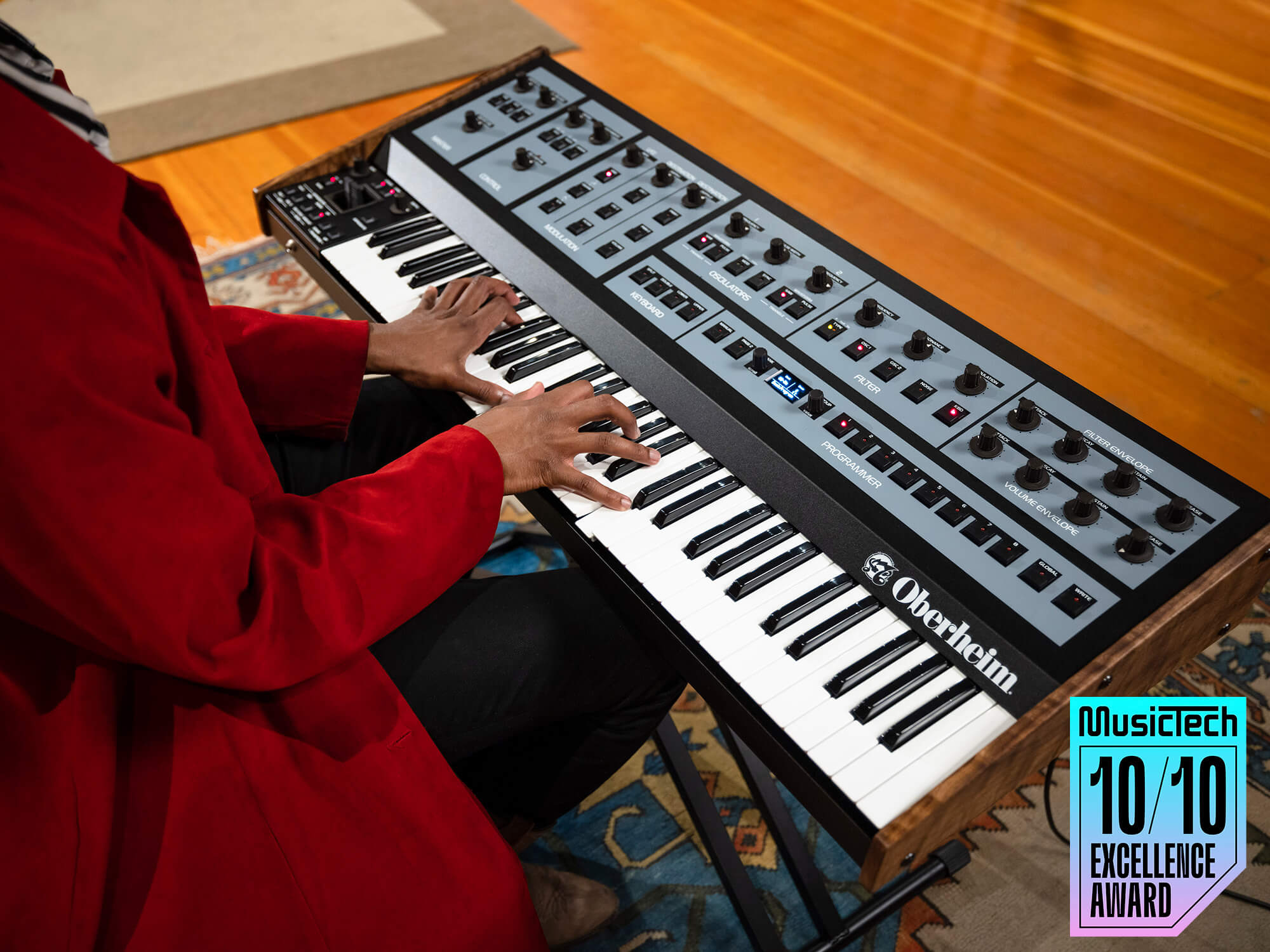
Review Overview
Our rating
10
Our verdict
⊕ Accurate and loving recreation of classic OB-series circuits
⊕ Enhanced functionality for the modern synthesist, including USB
⊕ Incredibly well built, with gorgeous walnut side panels
⊕ A beautiful, generously-sized keyboard with huge scope for expression
⊖ Asking price makes this unattainable for many
⊖ OLED screen threatens menu-diving at points
Ever since we saw Tom Oberheim and Marcus Ryle trading circuit designs on a napkin in that bar, only to be poured surprise whiskies by none other than the late, great Dave Smith, the Oberheim OB-X8 has been the talk of the synthesizer town. “For the first time in 40 years, a legendary analogue synth sound returns,” declares the company. Oberheim’s legacy is without a doubt among the electronic music world’s most venerable, with Tom Oberheim comfortably rubbing shoulders with the likes of Dave Rossum and Bob Moog in the designer pantheon.
It was the development of the Synthesizer Expander Module in 1975 that paved the way for the legendary sounds of the Oberheim 4-Voice and 8-Voice, the world’s first commercially available polyphonic synthesizers and key weapons in the arsenals of Stevie Wonder and Prince. The OB-series then introduced full programmability to the Oberheim range, and in many ways came to define the sound of the 1980s. Of these, the OB-X is the OB-X8’s most direct predecessor, introduced in 1979 as a rival to the now legendary Prophet-5, a groundbreaking programmable instrument from none other than Dave Smith’s Sequential Circuits.
To have Dave Smith so involved with the design of the OB-X8, then, is essentially the synthesizer equivalent of Paul McCartney releasing a new album with Bob Dylan – and the untimely passing of Smith shortly before the release of the OB-X8 has made it all the more meaningful. Suffice to say, everybody is willing the OB-X8 to be fantastic. Is it?
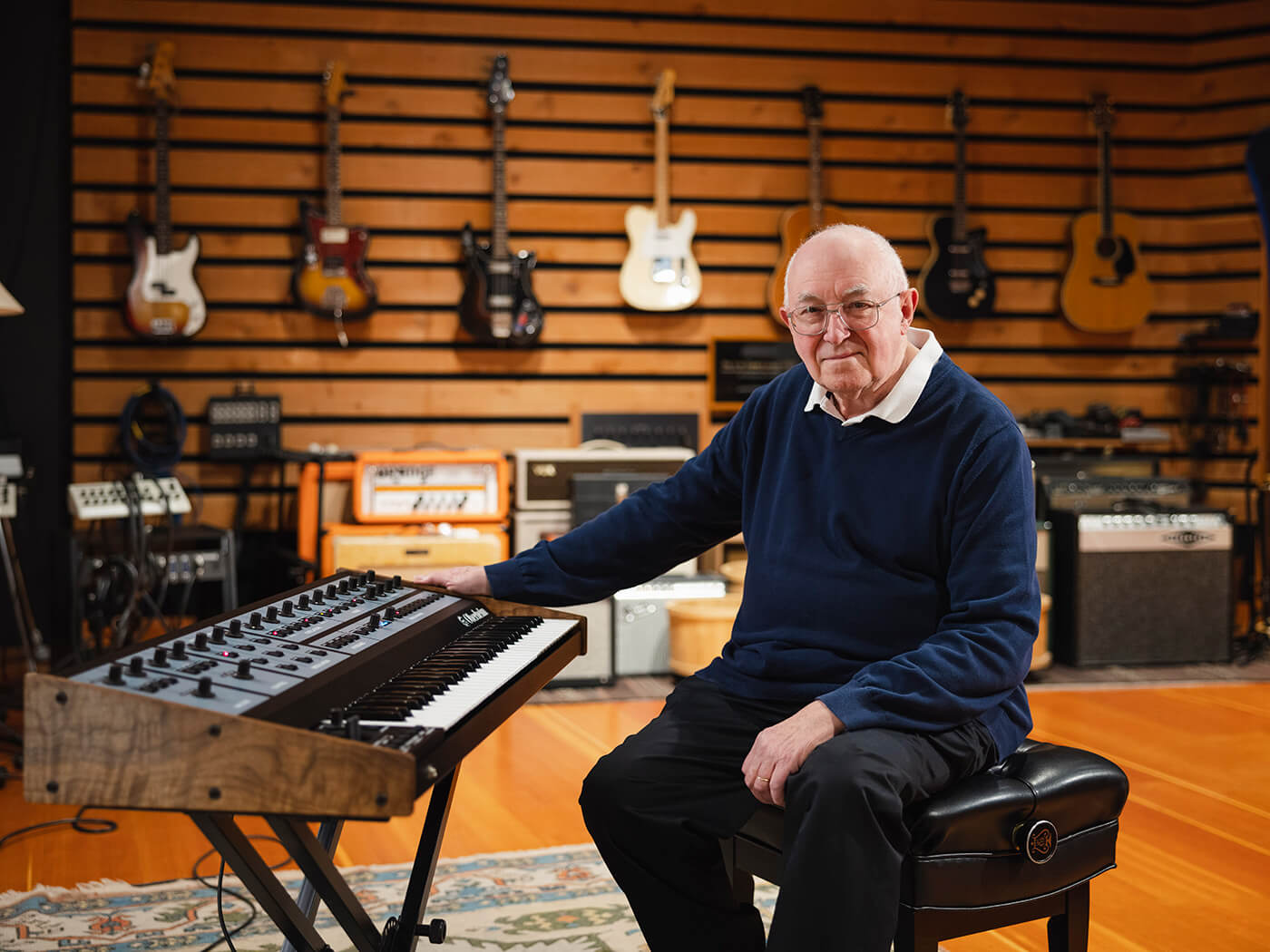
At first glance, the OB-X8 resembles the OB-X almost completely, with Oberheim opting for a retro-looking soft grey panelled finish over the blue-slats-on-black look of the OB-Xa and OB-8. For this, we thank them. It’s a lovely, clear and clean interface – important when it comes to a synth that could easily overwhelm with its whopping scope of functionality. A second look reveals it to be less bulky than the OB-X, though, in just the way one would hope for. It’s not just well-built, it’s beautifully built. It’s heavy, it’s spacious, it has walnut sides – we could go on.
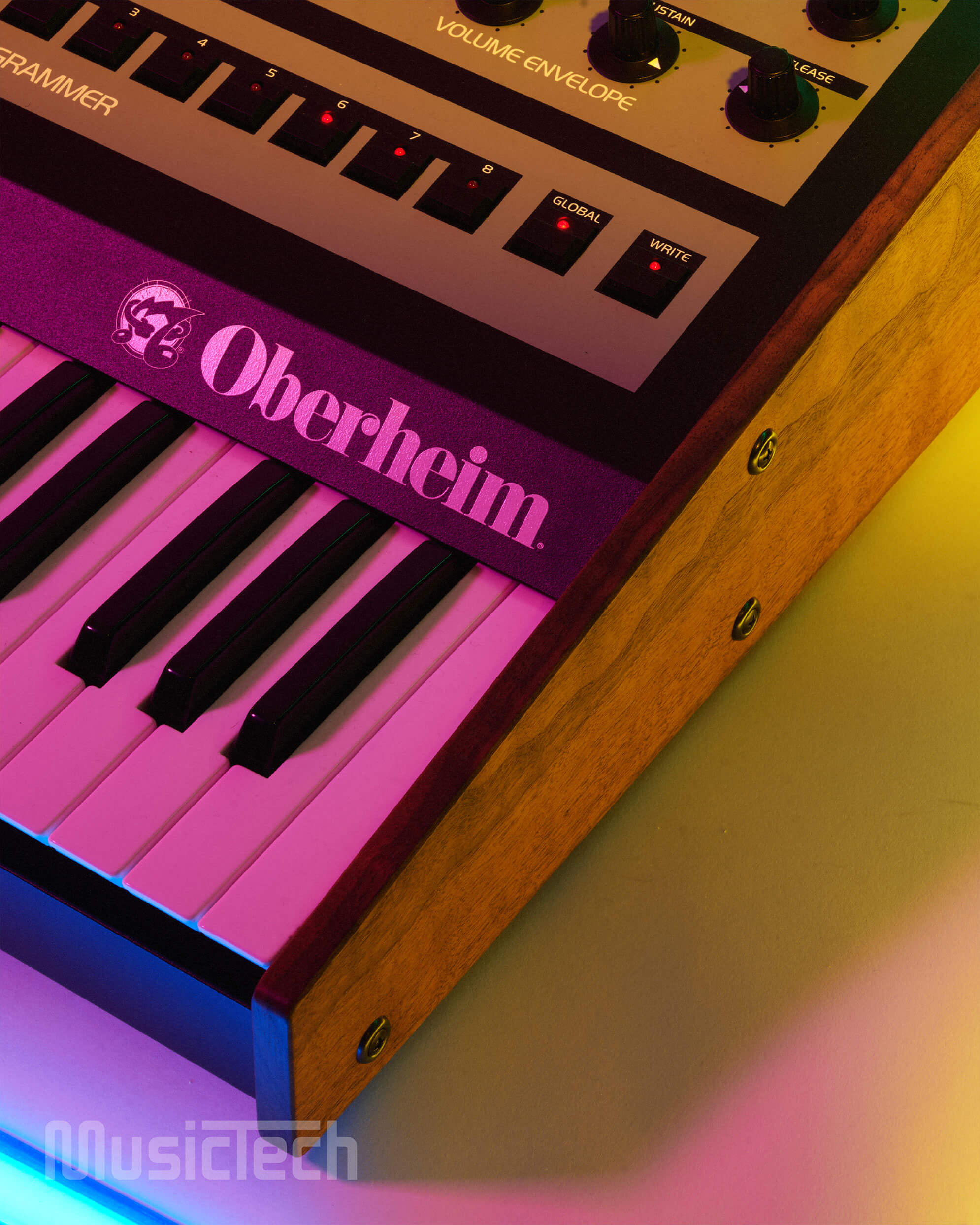
Where the OB-X8 doesn’t break rank is in its classic OB-series layout, with Master (named Manual on the OB-Xa), Control, Modulation, Oscillator, Keyboard, Filter and Envelope sections stretching from left to right. Immediately noticeable is the addition of an OLED display in the Programmer section, along with two encoders, which offers in-depth access to the OB-X8’s so-called Page 2 feature. This is a nod (at least by name) to the OB-8’s shift-style Page 2 button, which offered access to alternative features under the hood.
One thing we can verify before even playing a note on this drop-dead gorgeous instrument is that it faithfully channels the OB-series, in particular the OB-X. The Oberheim team promises to have exhaustively analysed and recreated the “complex interactions between the various components of each OB-series synth […]. The result is the most faithful, authoritative renewal of an analogue classic possible.” Big words, but Oberheim has put its money where its mouth is. So confident is the American developer in the OB-X8’s ability to replicate the circuitry of the original OB-series that it includes all the original 32 presets found on the OB-X in the OB-X8’s bank of factory sounds. And this is all-analogue, remember, so nothing is sampled: it’s a case of creating those sounds from scratch every time.
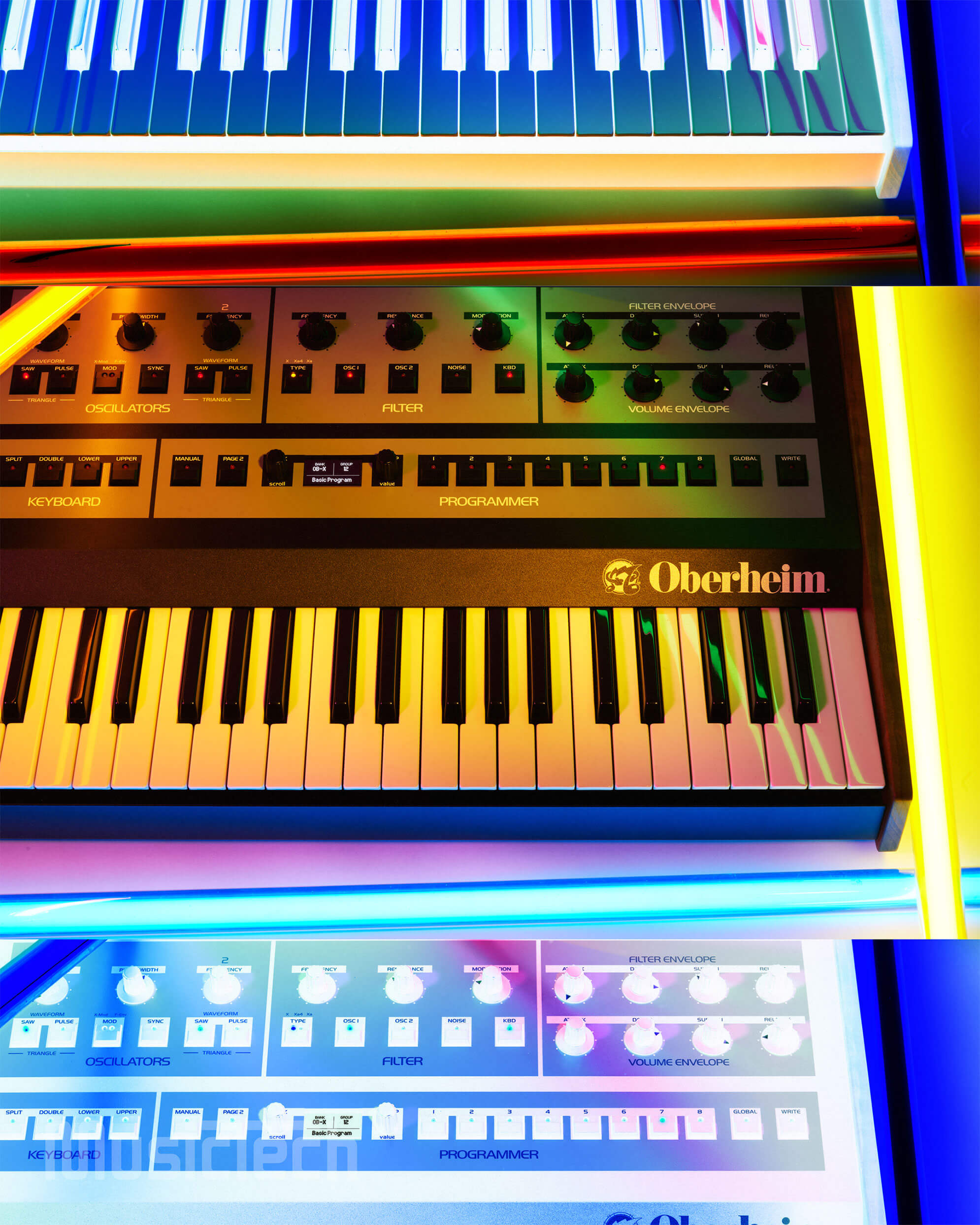
Unfortunately, we don’t have an original, mint condition OB-X to compare the OB-X8 to here in the MusicTech studio, but thankfully Marcus Ryle – co-designer of the OB-X8 and an Oberheim engineer in those golden years between 1980 and 1985 – does. As part of the online cavalcade of OB-X8 goodness that surrounded its release, Ryle has posted a video of himself comparing the factory presets of a 1980 OB-X to the same sounds as found in the OB-X8’s factory banks, and the two are, at least to the humble human ear, indistinguishable.
And as hoped, turning on the OB-X8 and selecting any preset at random, an entire lineage of synthesis excellence flows effortlessly out of our speakers. But the OB-X8 is far more than a simple reissue or reboot. For one, it adds a myriad of mod-cons into the mix, including a gorgeous FATAR-keybed endowed, velocity-sensitive keyboard with aftertouch, slots for over 600 user presets, USB MIDI (though, be warned, no USB-C to be found here), and – purportedly a Dave Smith suggestion (was this the circuit on that napkin in the original teaser video?) – a Vintage dial. This wonder knob adds an element of old-school unpredictability and parameter slop to the OB-X8’s otherwise squeaky-clean behaviour.
Homage is paid to the characters of the original Oberheim filters, too – “the soul of the OB-X8 sound,” in the developer’s words, which isn’t saying much considering the filter is the soul of most subtractive synthesizers. In any case, the SEM-descended two-pole discrete low-pass filter found on the OB-X is present and reporting for duty, along with all the original SEM design’s four filter modes: low-pass, band-pass, high-pass and notch, accessible via the OB-X8’s Page 2 settings.
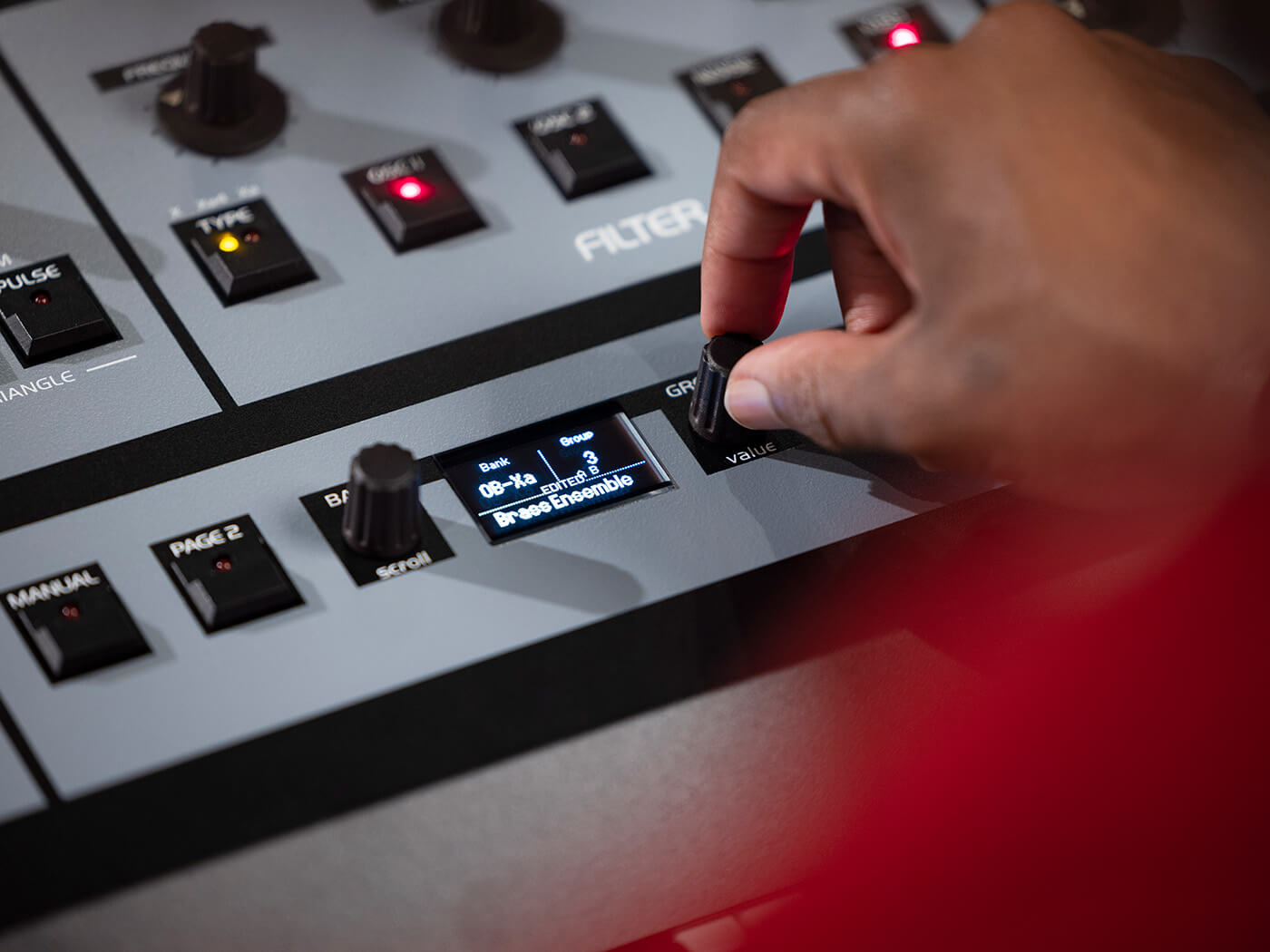
The OB-X8 could have called it a day there when it comes to filtering, but it’s far from finished. Also here is the Doug Curtis-designed CEM3320 filter found on the OB-Xa and OB-8, switchable between two-pole and four-pole modes. Of these, the OB-X 2-pole feels the most expressive and impactful, but, even at its most extreme resonance setting, works with a gentler resonant peak than the likes of a Moog Ladder filter. Smoothness and musicality are the name of the game here, with the Curtis CEM3320’s two modes offering even more gentle subtlety. Two LEDs on the filter type button, red and yellow, indicate which of the OB-X and two CEM3320 modes are selected, but these both go out when the SEM filter mode is changed via Page 2; which feels a tad random but does avoid the inclusion of dozens of LEDs on the panel’s filter section.
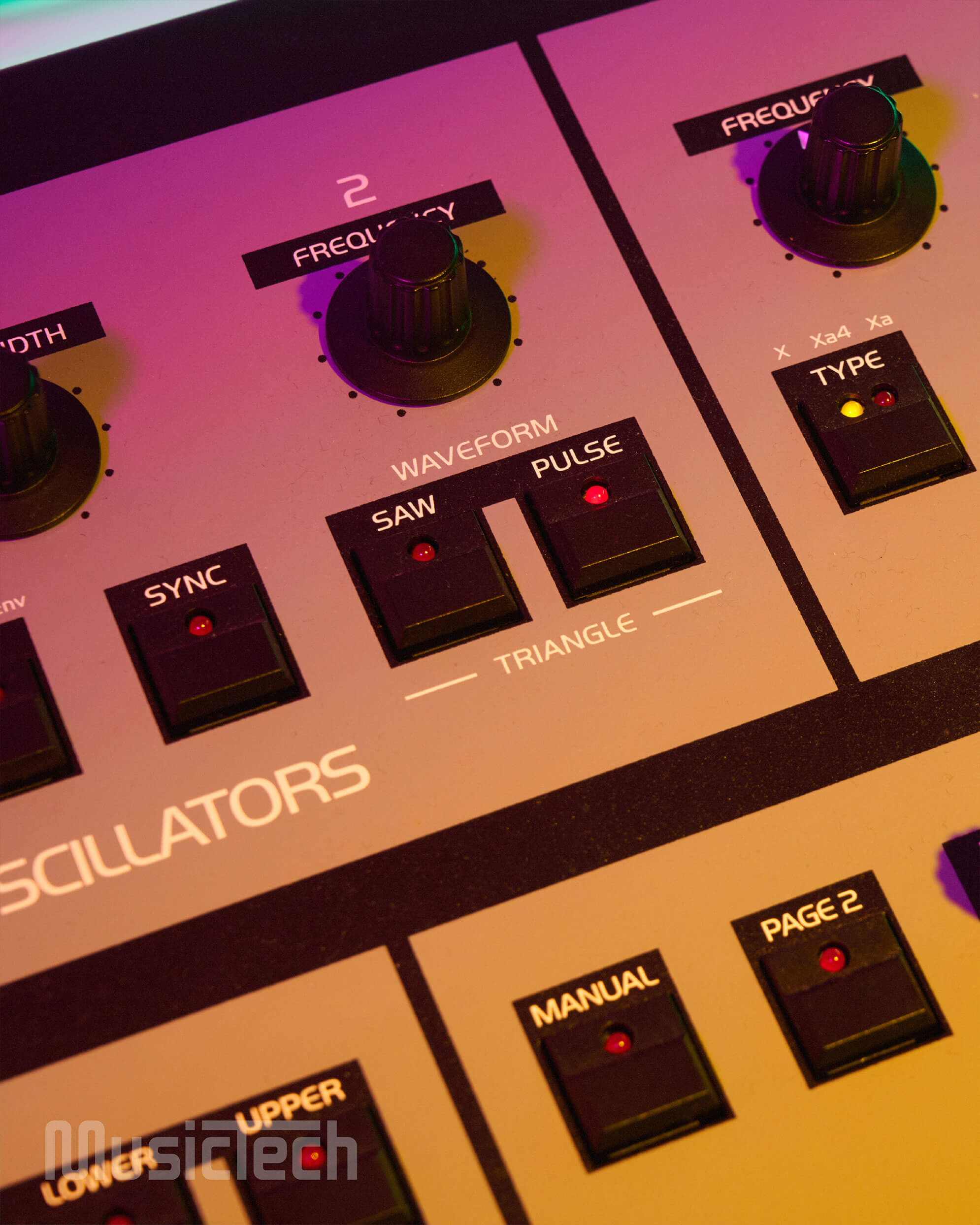
What’s being fed through those filters? The OB-X8’s focussed and efficient oscillators. In today’s world of limitless software instruments, with every imaginable waveform and wavetable at your fingertips, it’s important not to see the OB-X8’s twin oscillators per-voice – with their three simple waveforms apiece – as a limited selection. Make no mistake, between these there is ample scope for deep sound sculpting and the OB-X8’s full note range delivers those oscillators magnificently.
Oberheim’s oscillator workflow is elegant, with both oscillators defaulting to triangle unless saw and/or pulse waves are selected, walking us through the process along a familiar route until we dial in our desired sound. Beyond this, the OB-X8 panel’s Keyboard section reveals its bi-timbral side, allowing two different presets to be mapped to different halves of the keyboard and even layered on top of one another.
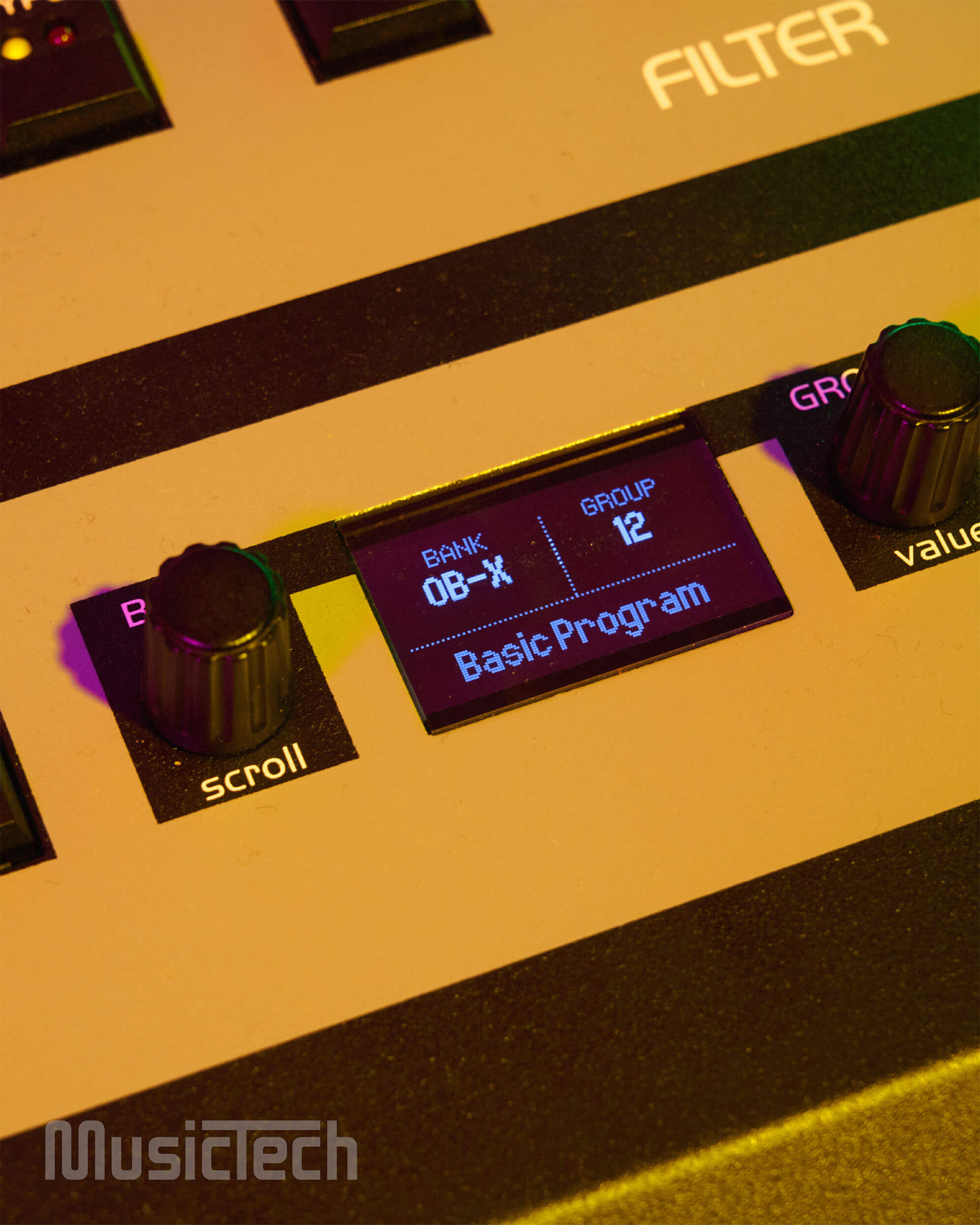
Cross-modulation and hard sync between the OB-X’s oscillators are here as expected, and lend some wonderful edge to its palette. Once again, OB-X, OB-Xa and OB-8 behaviours can be replicated, although only subtly this time with different pulse-width characteristics, but it’s a nice touch all the same. Here also lies one aspect of the OB-X layout that we would perhaps like to have seen added to: individual level controls for each oscillator— or at least oscillator 2. As it is, this is located in the Page 2 section of the OB-X and consequently makes the pursuit of a very simple parameter change feel uncomfortably close to menu-diving on the OLED screen. Luckily, it never pushes that too far.

As for modulation, the OB-X’s satisfying, button-based matrix is powered by a sole LFO, which can be directed toward the OB-X8’s oscillator pitches, filter, oscillator pulse width or VCA. Once again, musicality is favoured over wildness, though the LFO can touch audio rate at its top speed. Further modulation options are once again accessible via the Page 2 options, including the LFO wave shape and even a two-stage modulation envelope. The keyboard-flanking Lever Box, with a design almost exactly replicating that of the OB-8, offers even more opportunities for performative expression, presenting easily accessible arpeggiation, pitch bending, modulation and more.
Alas, there’s far more to marvel at with the OB-X8 than we could cover in a review even twice this length. Perhaps most importantly, far from a reboot that still leaves one wondering what an original would be like to play, it really feels like the genuine article – every bit a classic Oberheim – with generous lashings of classic OB-series functionality. It is without a doubt the instrument we were promised; delivering warm chords, growling bass, piercing leads and much, much more in a variety of modes. An instrument that will hold its own for years to come, the OB-X8 is a fine synthesizer with few rivals.
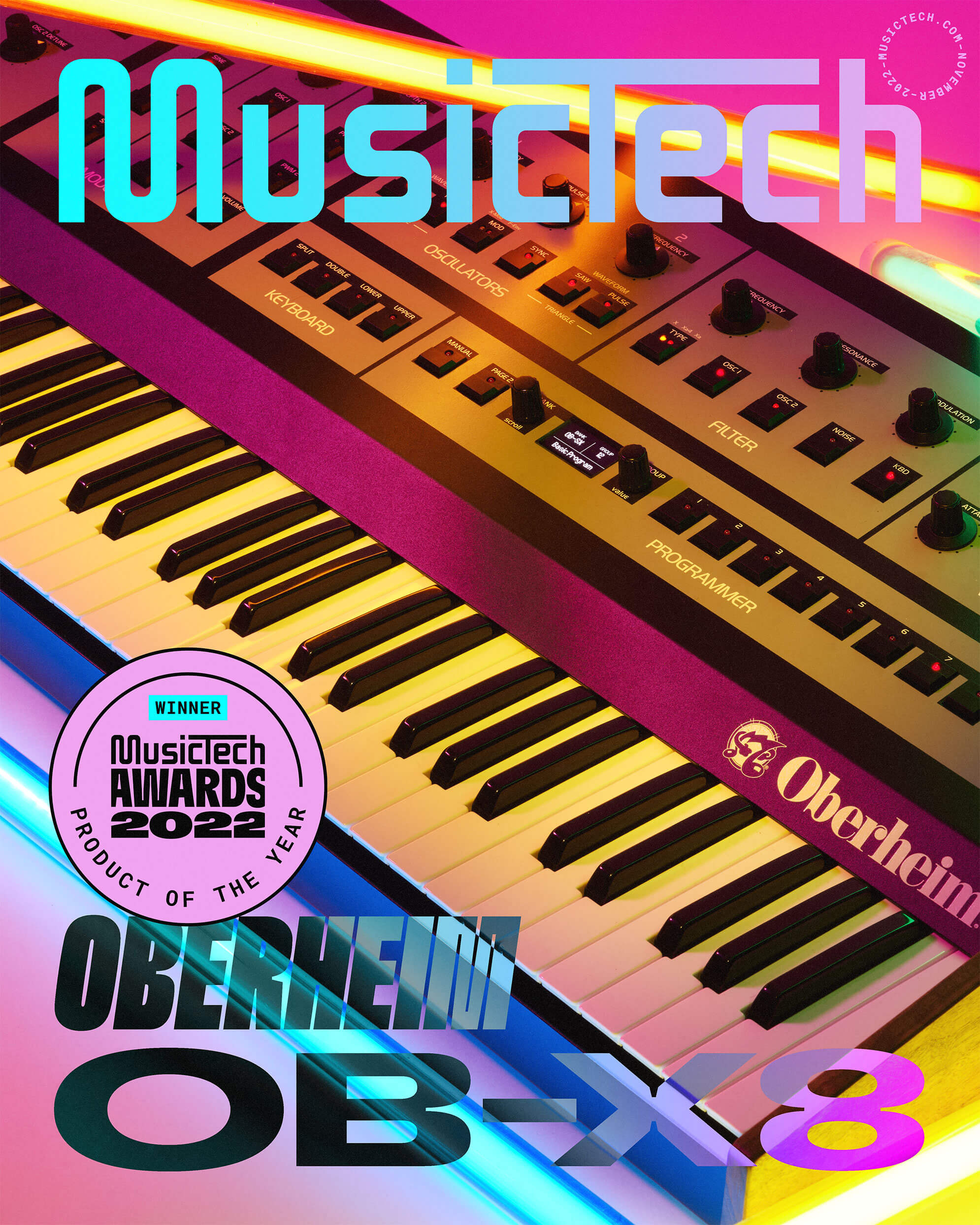
Key Features
- Eight-voice, twin oscillator polyphonic synthesizer
- Expressive multimode keyboard with velocity sensitivity and aftertouch
- Lever Box with a selection of quickly accessible performance tools
- Multimode filter capable of emulating various coveted Oberheim filters
- Onboard LFO-based modulation matrix
- Page 2 settings under the hood reveal extra functions and parameters
- Faithful recreations of the OB-series’ famed circuitry, with many new functions on top
- £4,799
- Contact Oberheim
- Buy: Gear4music, Andertons